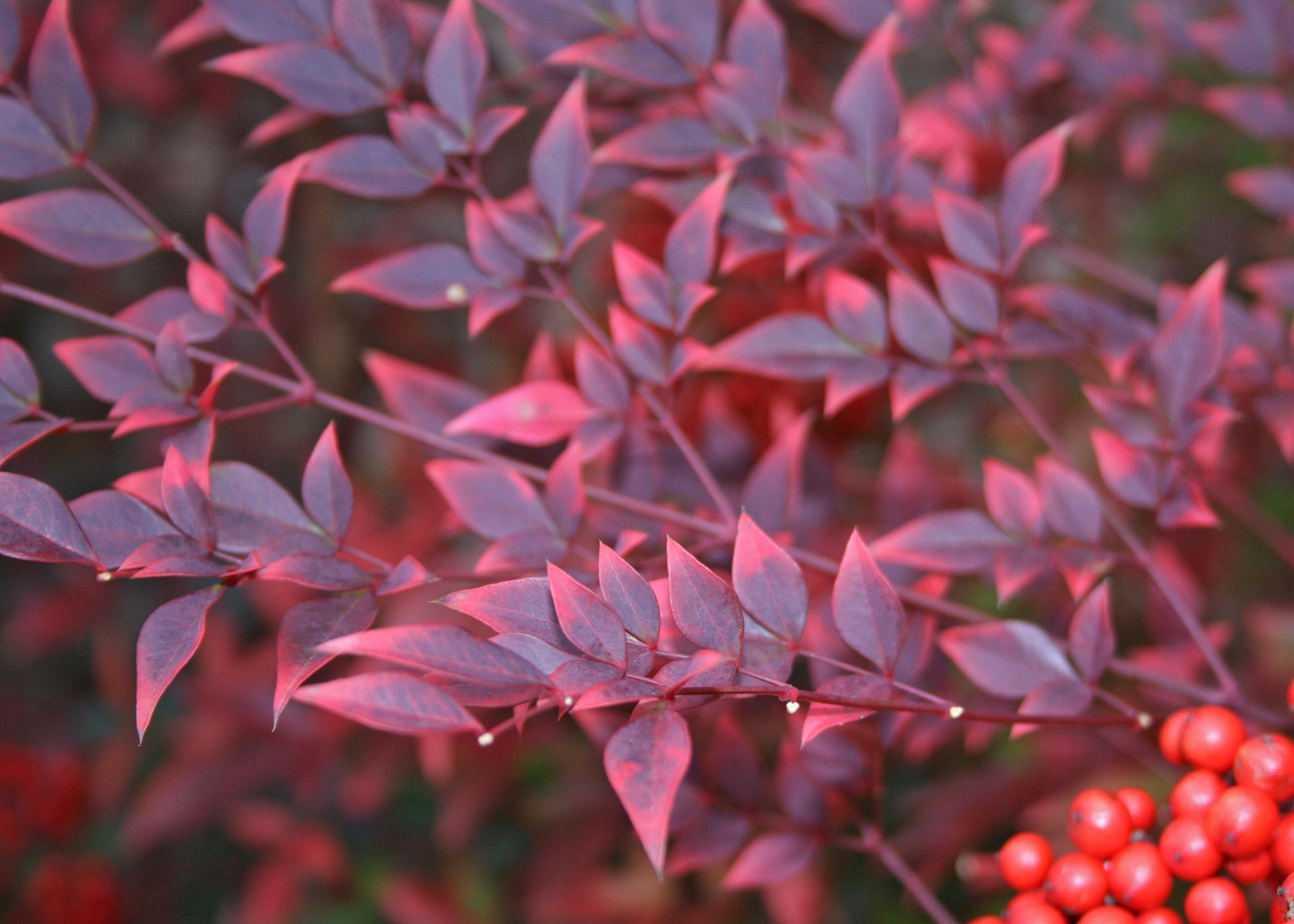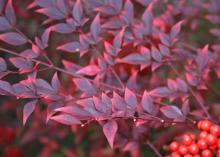Information Possibly Outdated
The information presented on this page was originally released on February 2, 2015. It may not be outdated, but please search our site for more current information. If you plan to quote or reference this information in a publication, please check with the Extension specialist or author before proceeding.
Use hardy nandina for winter colors
Cold winter weather causes changes in the foliage of many evergreen plants, including making them express new colors.
For instance, Japanese cleyera produces rich, velvety burgundy foliage along with bright red petioles. I really like the way the boxwoods in my landscape develop a warm, orangey-bronze, but if I had to pick my favorite evergreen for cold weather color, it would have to be nandina.
Our grandparents called nandina “heavenly bamboo,” and some people say it is overused in the landscape. But there’s a good reason a lot of folks plant nandina, and that is because it looks so good. The fact that it has few pests and actually thrives on neglect only adds to its appeal.
The foliage is tropical and looks exotic with leaves that are compound and bisected three ways. The leaves are a bright, glossy green in the summer, but they really shine in the winter with a fiery array of reds and burgundies.
Nandina flowers in the spring with big panicles of white. In the fall and winter, the berries are the main event. Clusters of red berries start upright, and, as they mature, they hang down in hefty groups. The plant has bamboo-like, arching canes that rise from a central-growing crown.
If not pruned, these bushes can grow to a mature size of up to 8 feet tall. You can easily control the size by pruning the tallest canes. Do this after the berries have set so you don’t remove too many and spoil the winter show.
Dwarf nandina varieties have been developed, and these have increased the landscape options for the plant. They do not flower consistently, so they don’t have the gorgeous fruit production of full-size shrubs. However, some of the dwarfs have burgundy and red foliage all through the year. What better way to add a splash of red than by using landscape shrubs?
In my opinion, Firepower is one of the better dwarfs. The foliage is green and transforms to red for the cooler months. The intensity of foliage color depends on whether it is planted in the full sun or partial shade. The colors are markedly more vivid with increasing sunlight.
Dwarf nandina varieties look great when planted in masses in the landscape. They look fantastic in front of larger evergreen foundation plantings such as holly or boxwood.
Be sure to buy larger containers when planting these masses. While it may be expensive, you will be more satisfied in the long run because you will need fewer plants, and these will fill in much quicker for a finished look.
Plant in raised beds in well-drained soil, and then add a good quality layer of organic mulch. Feed lightly each spring with a couple of tablespoons of 10-10-10 or a slow-release fertilizer. Lightly scratch the fertilizer into the soil surrounding the plant.
Divide nandina in the winter using a sharp shovel or spade. Replant immediately or place the new plants in containers and water well until you place them in the ground.








